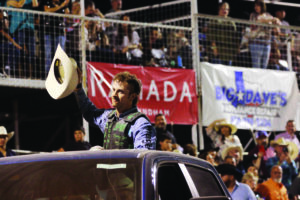LYNN HAVEN, Florida – Air Force colonel and family medicine practitioner Dr. Thatcher Cardon beat more than 19,000 competitors in the US National Aeronautics and Space Administration’s (NASA) Lunar Loo Challenge, earning second place and $10,000 for designing an inflatable toilet that can be used both during space travel and on moon expeditions, NASA announced today.
Because Cardon also took first place in NASA’s 2017 Space Poop Challenge, some are wondering whether he prefers the title of Poop Prize Prodigy or Extraterrestrial Excrement Expert.
Cardon laughed at the question. “I don’t know. Neither one is very flattering.”
And how does it feel to know the first woman on the moon may use a toilet of his design?
“I’ve always been fascinated with NASA and spaceflight,” Cardon replied. “It’s been surprising and gratifying to discover that I have something to contribute. It’s exciting to be involved even in a small way.”
NASA hasn’t put a man on the moon since 1972 but is aiming to send astronauts there by the end of 2024 and was seeking designs for a “next generation device that is smaller, more efficient and capable of working in both microgravity and lunar gravity.” Toilets used at the International Space Station are built for microgravity only and are complicated structures impractical for two-week moon trips.
Resembling a flat-topped snow globe, Cardon’s toilet is light, portable and easy to stow with a removable, custom-fit seat for each astronaut. The bowl and seat, made of rubberized fabric, inflate over a small plastic base. Disposable liners, made of materials similar to those in diapers, hook over the seat and have separate urine and feces pouches to catch waste and trap moisture in super-absorbent sodium polyacrylate.
“I think what set my design apart from others was the custom-fit inflatable seat,” Cardon explained. “Since astronauts vary in size and gender, a main challenge in this toileting situation is proper alignment of the astronaut with the waste pouch openings. Rubberized fabric conforms to the astronaut’s shape better than a hard seat would.”
Inside the toilet’s base, a compressor inflates the toilet and a fan creates airflow to inflate the pouches and guide waste into them when gravity is not sufficient to do so. The base has another filter in case of overflow and a carbon filter to trap odors.
When the astronaut is finished using the loo, he or she removes the liner, uncovering another. Soiled liners are vacuum-packed in a larger bag with antimicrobial chemicals.
Storing human waste in low-pressure environments poses some unpleasant possibilities. If the bags are exposed to low pressure while still at room temperature, they will immediately explode. Freezing the waste gives the astronauts more time to transport the waste without a mess. Cardon recommends freezing the waste and then puncturing the bag before removing it from the craft.
In other words, while Neil Armstrong left behind footprints, 21st-century lunar landers may leave behind something to step in.
Cardon said he spent about twelve hours designing the loo, using supplies from Hobby Lobby and Walmart to make mockups. David Morse, a friend in his church congregation, helped him make CAD drawings of his design, which were required in the application.
More than 2,000 entries were submitted in the contest, including team entries, for a total of more than 19,000 contestants. The contest was run by HeroX, an online crowdsourcing platform that has partnered with NASA on numerous occasions.



